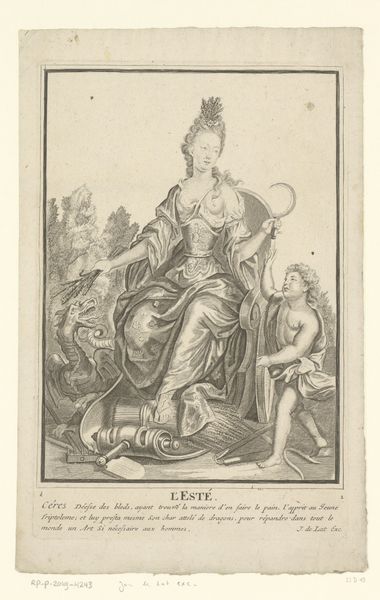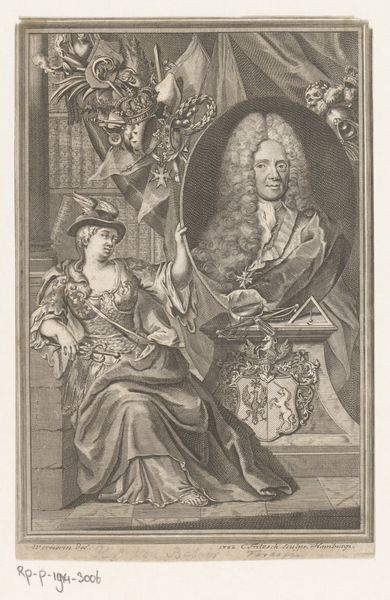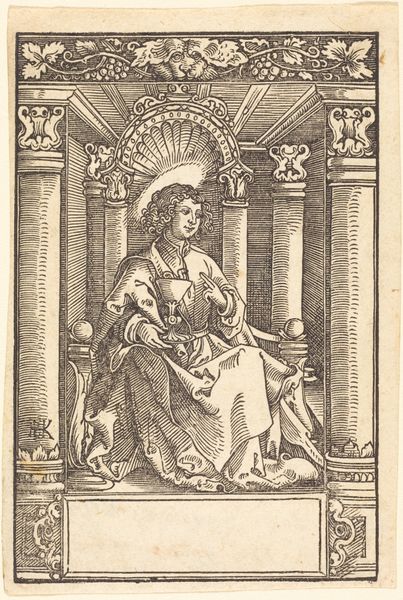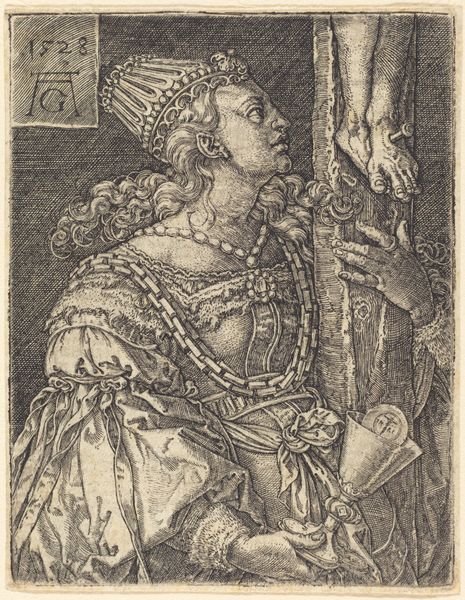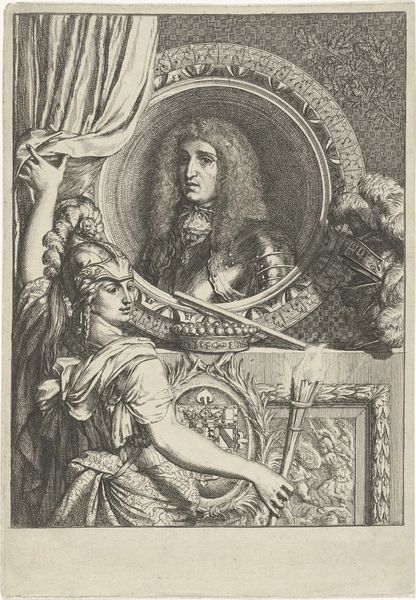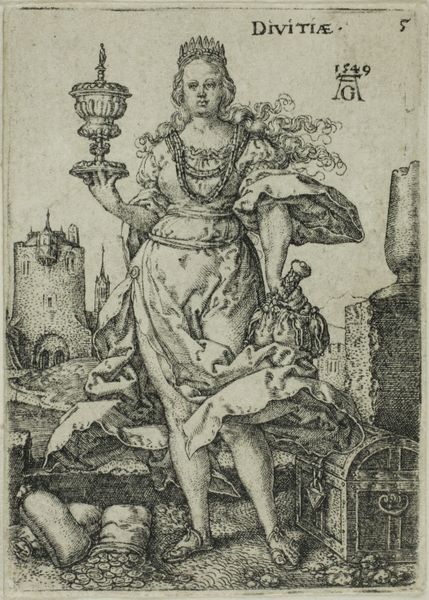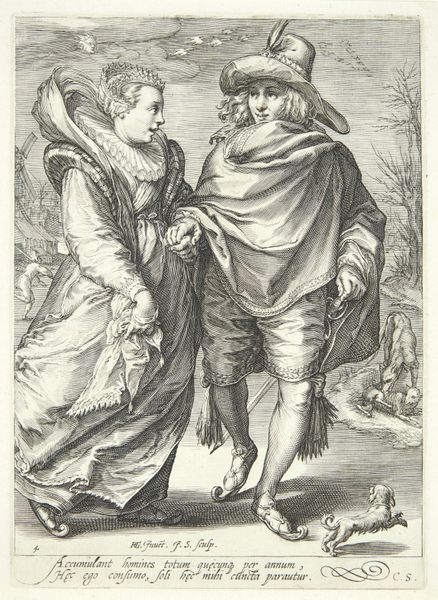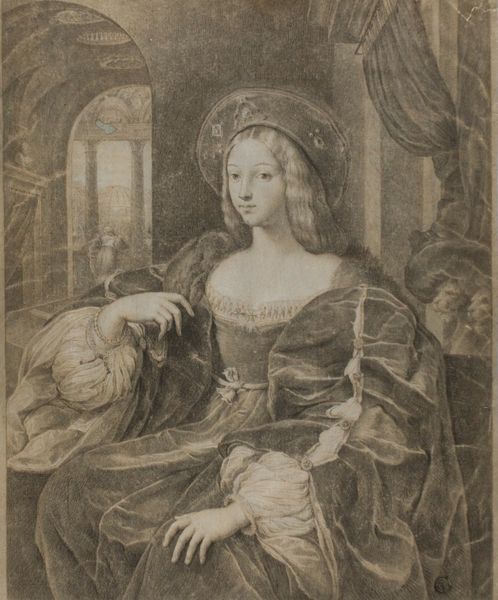
print, engraving
#
portrait
#
baroque
# print
#
figuration
#
line
#
portrait drawing
#
history-painting
#
northern-renaissance
#
engraving
Dimensions: 291 mm (height) x 204 mm (width) (bladmaal)
Curator: This engraving by Jan Saenredam, crafted around 1595, depicts the biblical figure of Judith holding the head of Holofernes. It’s a striking composition. What stands out to you initially? Editor: The gaze. Judith’s eyes don’t meet Holofernes' severed head, nor do they meet ours. It's a calculated aloofness, almost indifference, amidst this brutal act. The scene drips with a strange kind of... agency. Curator: Agency, yes, but note how the stark line work and almost sculptural rendering of Judith's garments—those voluminous sleeves, for example—create a visual tension. It is less about emotive representation and more about form. The precise rendering, that elegant drapery, creates its own kind of drama, divorced from the goriness of the deed. Editor: But isn't that "drama," as you call it, precisely the point? The Northern Renaissance loved these contradictions—sensuality and piety, violence and beauty—all interwoven to probe at societal tensions, like female empowerment during the early modern period. The subtext resonates beyond the purely formal qualities. Curator: Perhaps. Though to get to that meaning, don't we need to appreciate the composition first? Notice how the curves of Holofernes’s head mirror the soft folds of Judith's dress, yet the lifeless weight of the head provides a chilling contrast to her controlled pose. Saenredam expertly balances lines and form to direct our reading of the subject matter. Editor: But that's also the paradox, isn't it? These heroic female figures were frequently sexualized, objectified even, within the patriarchal narratives of the time. Looking at the line, it feels exploitative given the power relations it visualizes. The piece really prompts a dialogue about female resistance and its complex representation in early modern art. Curator: Ultimately, its complexity lies in that skillful blend of form and narrative, pushing against and harmonizing with its source material. Editor: Precisely. The intersection between artistry, morality, and politics makes it a compelling lens for examining that period.
Comments
No comments
Be the first to comment and join the conversation on the ultimate creative platform.



